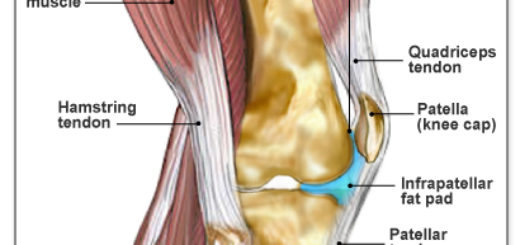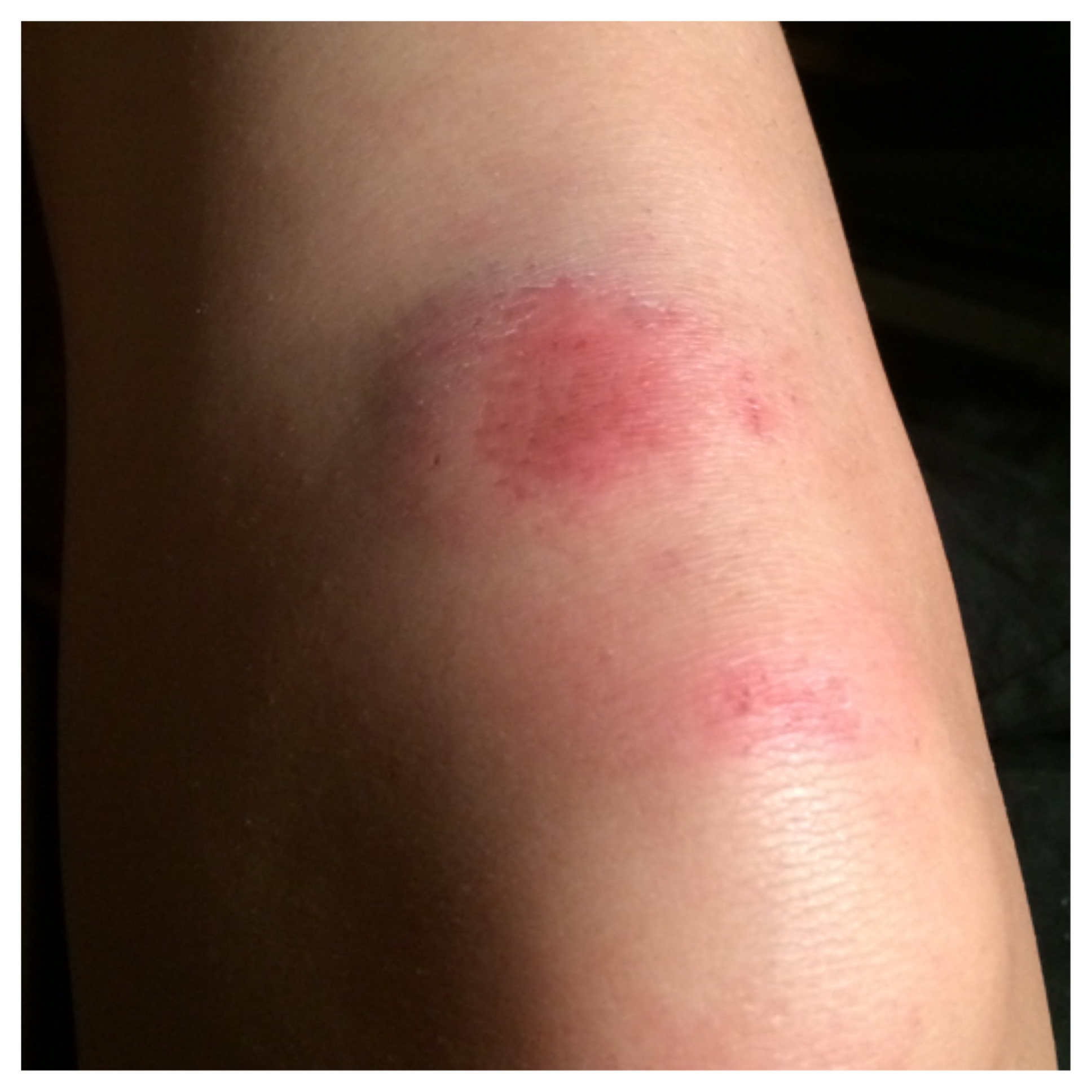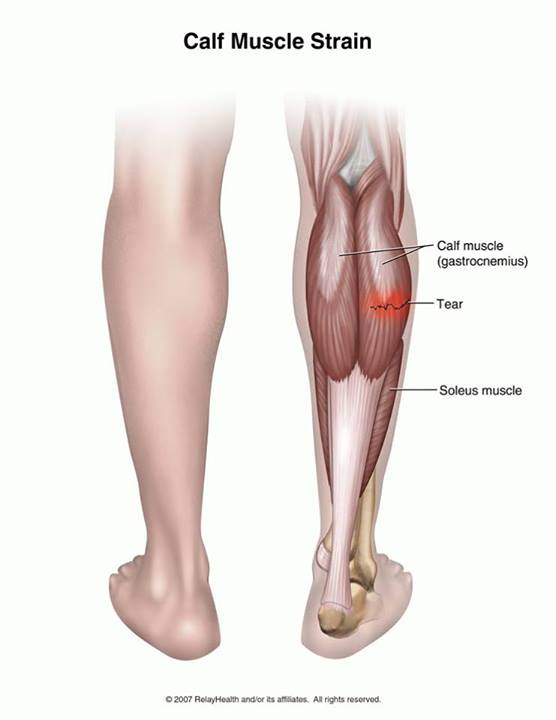Groin Strain

What is a groin strain?
A strain is a stretch or tear of a muscle or tendon. People commonly call such an injury a “pulled” muscle. The muscles in your groin help bring your legs together. There are two muscles that may commonly get injured in a groin strain: the adductor magnus (the large muscle running down the inner side of the thigh) and the sartorius (a thinner muscle that starts on the outside of your hip, crosses your thigh and attaches near the inside of the knee).
Causes of groin strain?
A groin strain most commonly occurs when you are running or jumping or when there is a forced push-off or cut.
Symptoms of groin strain?
You will have pain or tenderness along the inner side of your thigh or in the groin area. You will have pain when you bring your legs together. You may have pain when lifting your knee up.
Diagnosis of groin strain?
Your healthcare provider will take note of your symptoms and will examine your thigh and hip.
Treatement of groin strain?
While you are recovering from your injury:
- Put an ice pack, gel pack, or package of frozen vegetables, wrapped in a cloth on the area every 3 to 4 hours, for up to 20 minutes at a time.
- You could also do ice massage. To do this, first freeze water in a Styrofoam cup, then peel the top of the cup away to expose the ice. Hold the bottom of the cup and rub the ice over the area for 5 to 10 minutes. Do this several times a day while you have pain.
- Take an anti-inflammatory medicine such as ibuprofen, or other medicine as directed by your provider. Nonsteroidal anti-inflammatory medicines (NSAIDs) may cause stomach bleeding and other problems. These risks increase with age. Read the label and take as directed. Unless recommended by your healthcare provider, do not take for more than 10 days.
Wear a supportive bandage called a thigh wrap or tape your thigh or groin. - Follow your provider’s instructions for doing exercises to help you recover.
- After you recover from your acute injury, use moist heat for 10 to 15 minutes at a time before you do warm-up and stretching exercises. Do not use heat if you have swelling.
- Change your sport or activity to one that does not make your condition worse. For example, you may need to swim instead of run.
How long will the effects last?
The length of recovery depends on many factors such as your age, health, and if you have had a previous groin injury. Recovery time also depends on the severity of the injury. A mild groin strain may recover within a few weeks, whereas a severe injury may take 6 weeks or longer to recover. You need to stop doing the activities that cause pain until the groin has healed. If you continue doing activities that cause pain, your symptoms will return and it will take longer to recover.
When can I return to my normal activities?
Everyone recovers from an injury at a different rate. Return to your activities depends on how soon your groin recovers, not by how many days or weeks it has been since your injury has occurred. In general, the longer you have symptoms before you start treatment, the longer it will take to get better. The goal is to return you to your normal activities as soon as is safely possible. If you return too soon you may worsen your injury.
You may safely return to your activities when, starting from the top of the list and progressing to the end, each of the following is true:
- You have full range of motion in the injured leg compared to the uninjured leg.
- You have full strength of the injured leg compared to the uninjured leg.
- You can walk straight ahead without pain or limping.
How can I prevent a groin strain?
A groin strain is best prevented by warming up properly and doing groin muscle stretching exercises prior to your activities. This is especially important in activities such as sprinting or jumping.
Physiotherapy of groin strain
Groin Strain Exercises

You can begin stretching your groin muscles right away. Stretch gently and avoid any sharp pain. If you have sharp pain while doing these exercises, you should not do them.
Hip adductor stretch:
Lie on your back. Bend your knees and put your feet flat on the floor. Gently spread your knees apart, stretching the muscles on the inside of your thighs. Hold the stretch for 15 to 30 seconds. Repeat 3 times.
Hamstring stretch on wall:
Lie on your back with your buttocks close to a doorway. Stretch your uninjured leg straight out in front of you on the floor through the doorway. Raise your injured leg and rest it against the wall next to the door frame. Keep your leg as straight as possible. You should feel a stretch in the back of your thigh. Hold this position for 15 to 30 seconds. Repeat 3 times.
You may do the next 2 exercises when the pain in the groin muscles decreases.
Side-lying leg lift (cross over):
Lie on your injured side with your top leg bent and your foot placed in front of the bottom leg. Keep your bottom leg straight. Raise your injured leg as far as you can and hold it for 5 seconds. Keep your hips still while you lift your leg. Hold this position for 5 seconds and then slowly lower your leg. Do 2 sets of 15.
Straight leg raise:
Lie on your back with your legs straight out in front of you. Bend the knee on your uninjured side and place the foot flat on the floor. Tighten the thigh muscle on your injured side and lift your leg about 8 inches off the floor. Keep your leg straight and your thigh muscle tight. Slowly lower your leg back down to the floor. Do 2 sets of 15.
Once it is easy to do the leg lifts, start strengthening your thigh muscles and groin muscles with the following elastic tubing exercises.
Resisted hip flexion:
Stand facing away from a door. Tie a loop in one end of a piece of elastic tubing and put it around the ankle on your injured side. Tie a knot in the other end of the tubing and shut the knot in the door near the floor. Tighten the front of your thigh muscle and bring the leg with the tubing forward, keeping your leg straight. Return to the starting position. Do 2 sets of 15.
Resisted hip extension:
Stand facing a door with elastic tubing tied around the ankle of your injured side. Knot the other end of the tubing and shut the knot in the door near the floor. Draw your abdomen in towards your spine and tighten your abdominal muscles. Pull the leg with the tubing straight back, keeping your leg straight. Make sure you do not lean forward. Return to the starting position. Do 2 sets of 15.
Resisted hip abduction:
Stand sideways near a door with your injured side further from the door. Tie elastic tubing around the ankle on your injured side. Knot the other end of the tubing and close the knot in the door near the floor. Pull the tubing out to the side, keeping your leg straight. Return to the starting position. Do 2 sets of 15. For more resistance, move farther away from the door.
Resisted hip adduction:
Stand sideways next to a door with your injured side closer to the door. Tie a loop in one end of the tubing and slip the loop around the ankle on your injured side. Make a knot in the other end of the tubing and close the knot in the door near the floor. Bring the leg with the tubing across your body sideways, crossing over your other leg and stretching the tubing. Return to the starting position. Do 2 sets of 15.











